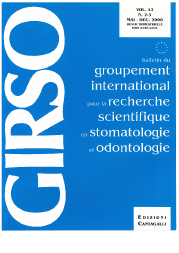Release of mercury from dental amalgam and its influence on salivary antioxidant activity
Abstract
Dental amalgam fillings are known to release significant levels of mercury (Hg) in saliva which could represent a continuous source of oxidative damage to tissues. The present investigation was aimed at verifying this hypothesis by determining a possible correlation between salivary Hg levels and salivary total antioxidant activity (TAA), used as an index of oxidative stress. Samples of saliva from 34 healthy donors were analyzed for Hg content, through vapor atomic absorption spectrometry, and for TAA, by determining the ferric reducing ability ('FRAP' method). A significant correlation between Hg and the number of amalgam restorations or total amalgam surface was evident in both the male and female subjects. A significant negative correlation between TAA and Hg levels or number of amalgam restorations or amalgam surface was evident in females, indicating that small increases in salivary Hg were sufficient to produce a decrease in salivary TAA. On the other hand, no significant correlation was found in the males. The present study provides, for the first time, evidence of a pro-oxidant role of the amalgam Hg chronically released in saliva.
Downloads
Published
Issue
Section
License
I hereby certify that the authors of the above manuscript have all:
1. Conceived, planned, and performed the work leading to the report, or interpreted the evidence presented, or both;
2. Written the report or reviewed successive versions and shared in their revisions; and
3. Approved the final version.
Further, I certify that:
1. This work has not been published elsewhere and is not under revision in another journal;
2. Humane procedures have been followed in the treatment of experimental animals (if applicable);
3. Investigations in humans was done in accordance with the ethical standards of the responsible committee on human experimentation or with the Helsinki Declaration (if applicable).
4. This paper has been carefully read by a native English speaker who is familiar with the field of work (this applies to authors who are not fluent in English); and
5. The copyright of the article is transferred from the authors to the Bulletin du Groupement International pour la Recherche Scientifique en Stomatologie et Odontologie upon acceptance of the manuscript.



